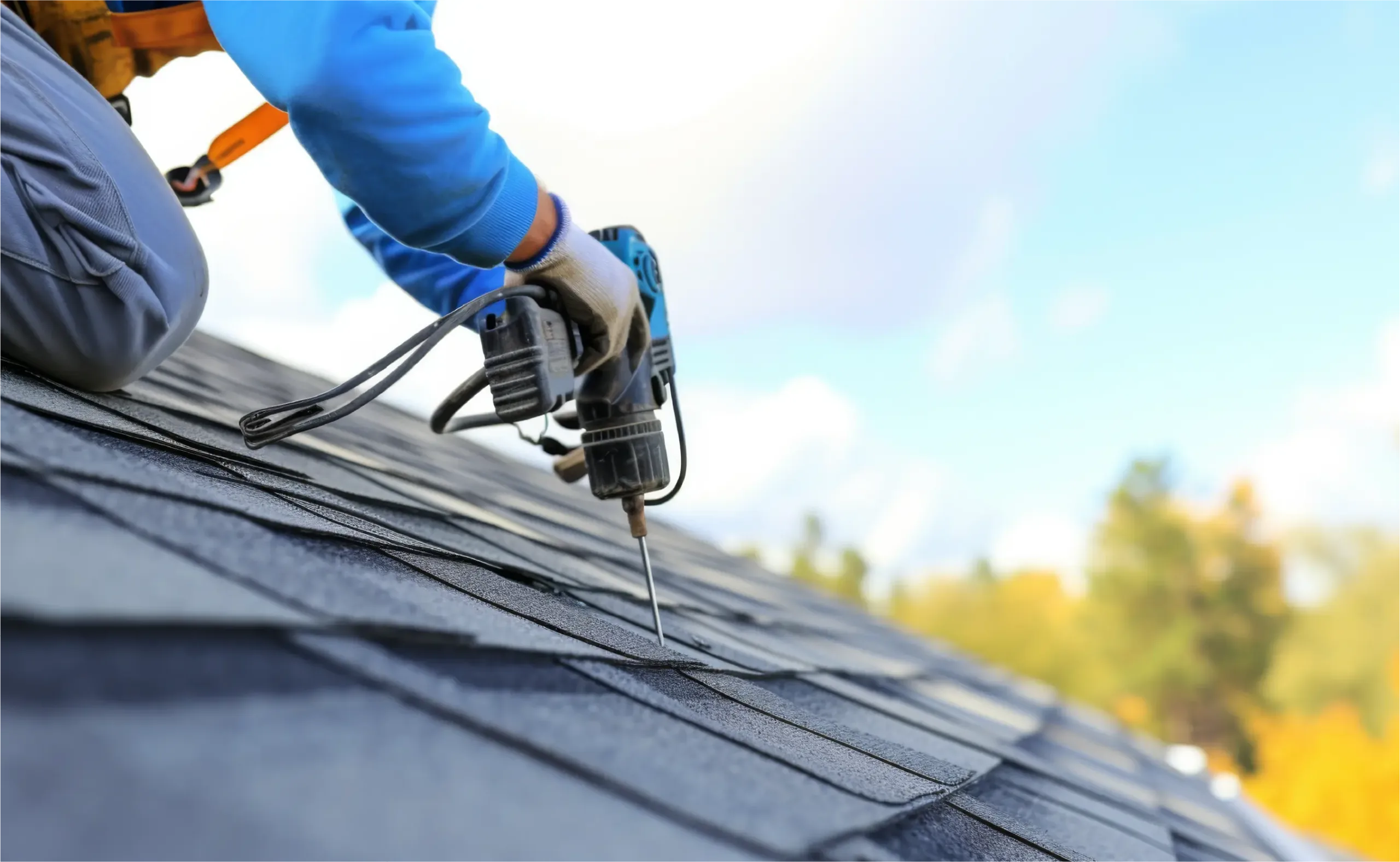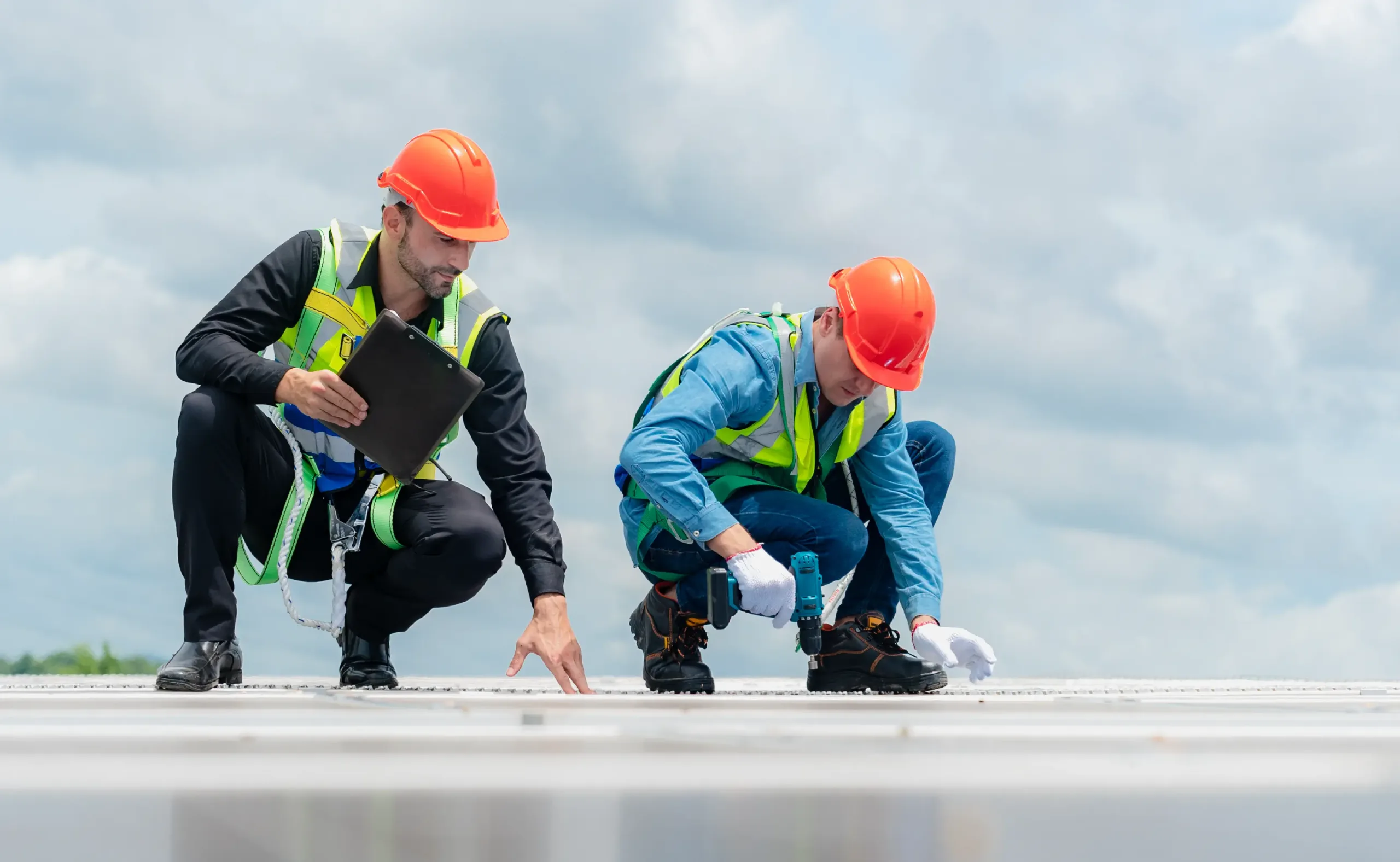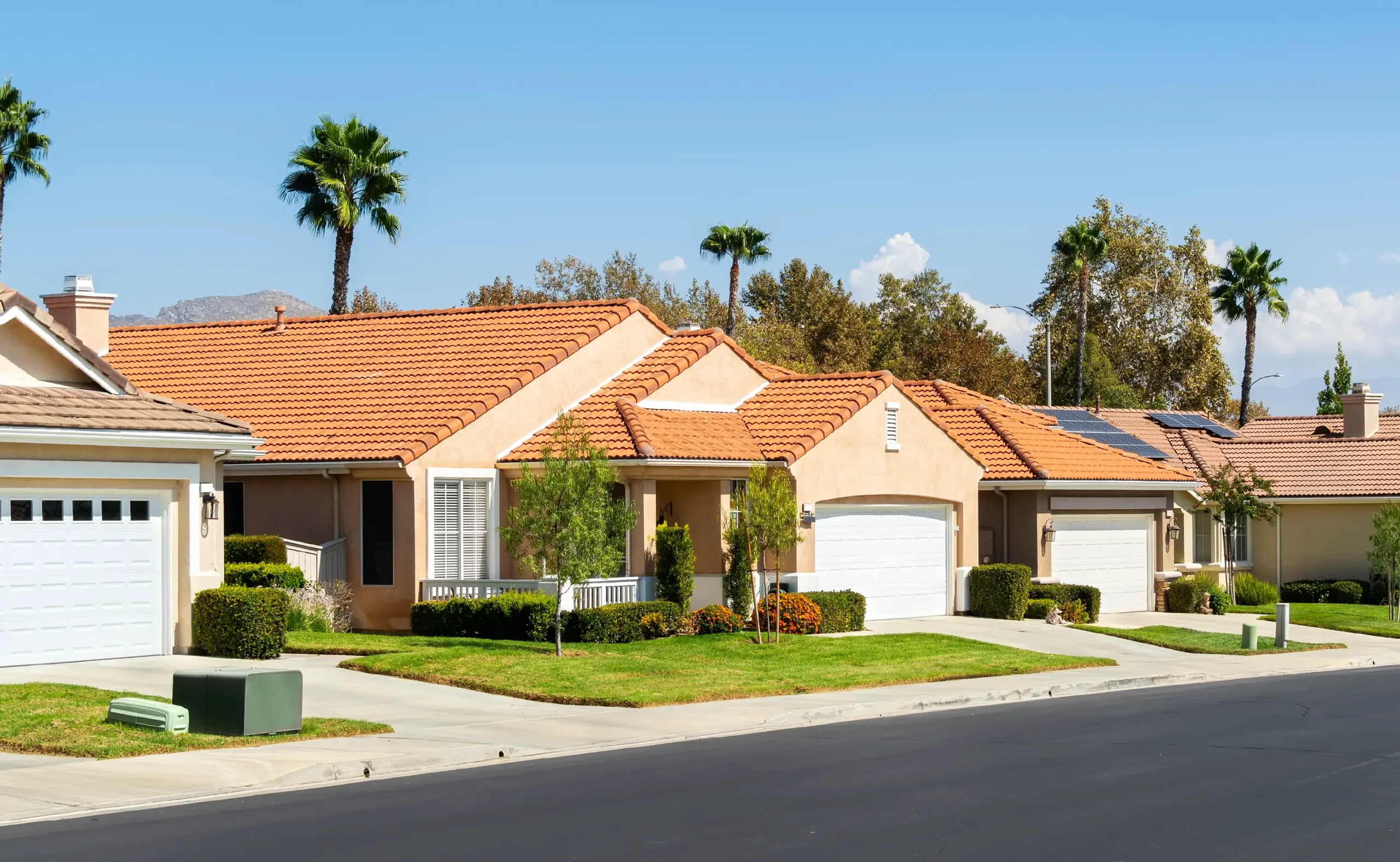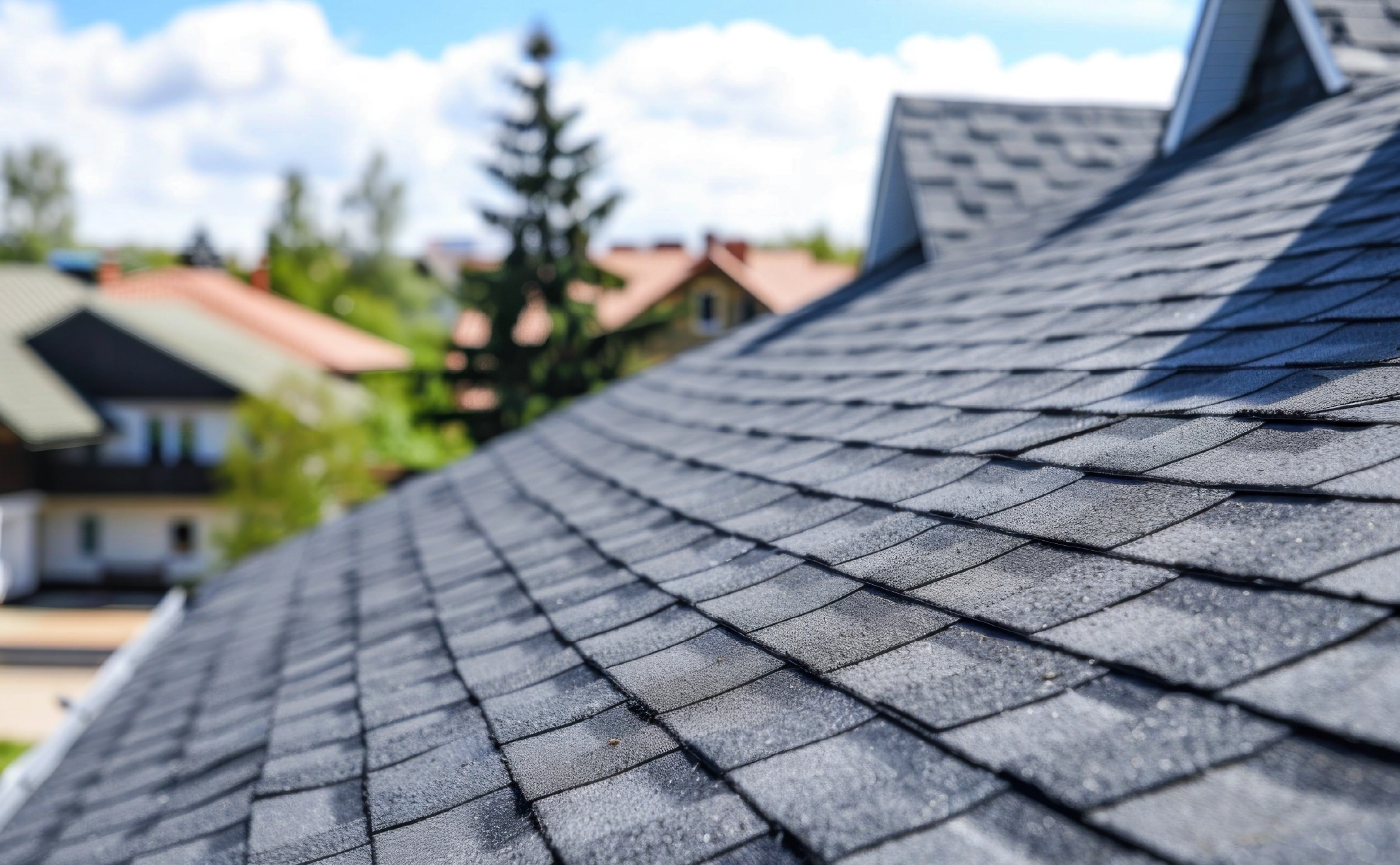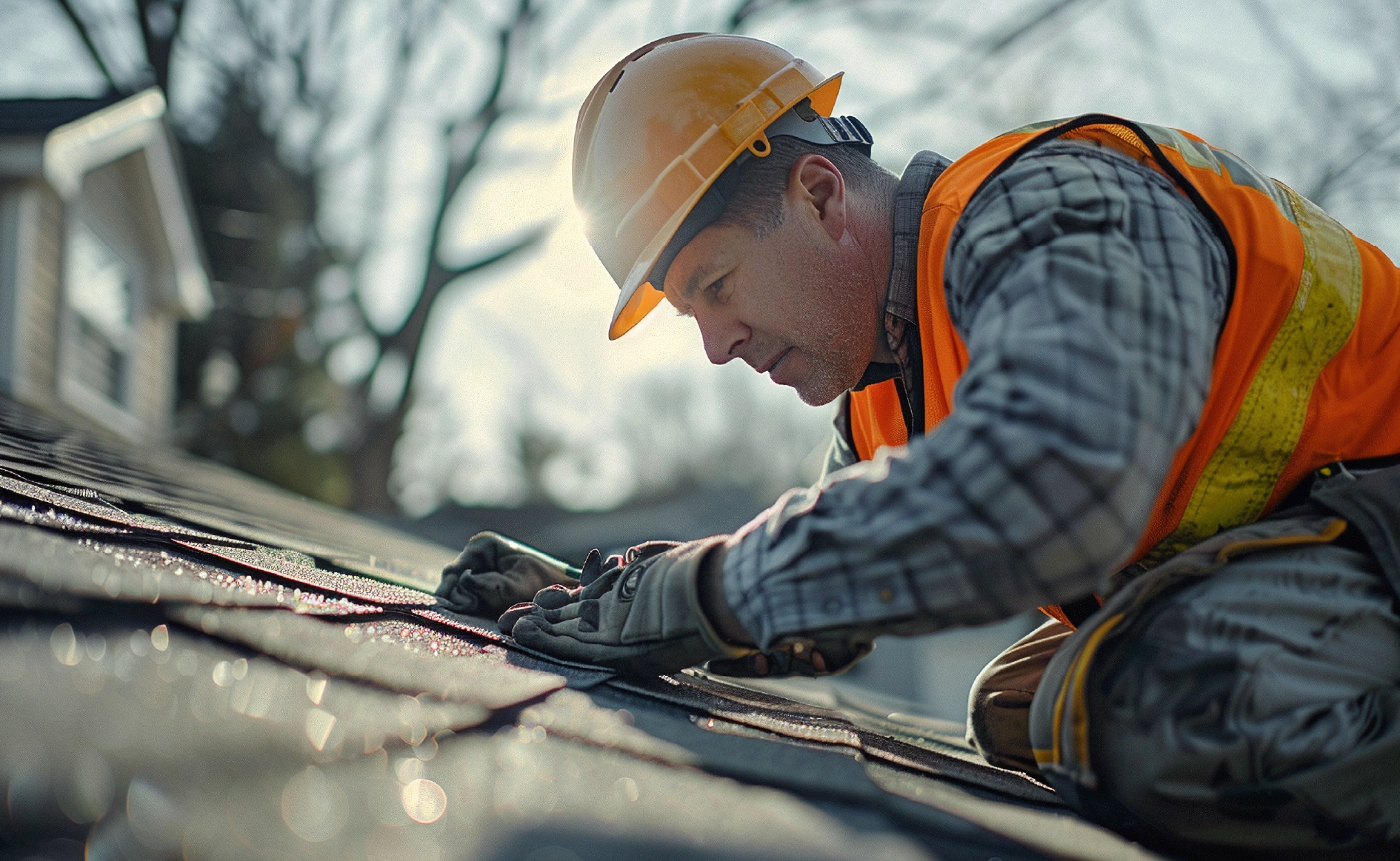Key Takeaways
- Asphalt shingles are more affordable upfront, easier to install, and ideal for traditional aesthetics.
- Metal roofing has a longer lifespan and offers superior durability and energy efficiency.
- Asphalt requires more maintenance and may absorb more heat, increasing summer cooling costs.
- Metal is environmentally friendly, often made from recycled materials, and fully recyclable at the end of its life.
- Shingles are quieter in rain, while metal roofs may increase resale value and qualify for insurance discounts with proper insulation.
- Your choice will factor in budget, climate, desired lifespan, appearance, and sustainability goals.
If you’re looking to replace your roof, the first consideration is: which roofing material should you choose? This is a big decision for any homeowner, as the one you go with will dictate how long it will last and how much upkeep it will involve. The two most popular options include asphalt shingles and metal roofing.
Each one has its benefits and drawbacks. Today we will go over the differences of each so you can make an educated decision on roofing in San Francisco.
Cost
Asphalt Shingles:
Affordability is the #1 reason homeowners choose asphalt shingle roofing. It costs the least upfront, which makes it ideal for those on a tight budget or for those who want a quick and easy replacement. The average cost is between $4.50–$12.25 per square foot but this varies with the type of shingles and size of the roof.
Metal Roofing:
Metal roofing costs more upfront, at between $4 and $30 per square foot, depending on whether you choose aluminum, steel, or copper. The upfront cost may be higher than asphalt, but the long-term savings makes it well worth it when it comes to durability and energy efficiency.
Lifespan and Durability
Asphalt Shingles:
Standard asphalt shingles last between 15 and 30 years depending on the installation, quality, and local weather patterns. In heavy rains, winds, or extreme temperature swings, shingles can deteriorate more quickly. Plus, they are vulnerable to moss and algae when installed in humid regions.
Metal Roofing:
Metal roofs last between 40 and 70 years or more with proper maintenance. They withstand extreme weather better than asphalt shingles, plus they resist cracking, shrinking, and erosion.
Appearance
Asphalt Shingles:
Available in a wide spectrum of colors and textures, shingles match a variety of architectural styles. With the ability to mimic the appearance of slate, tile, or wood shake, asphalt shingles are a versatile choice.
Metal Roofing:
Modern metal roofing comes in panels, shingles, and tiles, and can mimic materials such as wood and slate. With its sleek, modern appearance, metal goes best with contemporary homes. It comes in a lot of colors and custom finishes as well.
Energy Efficiency
Asphalt Shingles:
Because they absorb heat, asphalt shingle roofs can increase cooling costs during summer. You can choose reflective shingles that reduce heat absorption, but they cost more and are less common than standard shingles.
Metal Roofing:
As the most energy-efficient roofing material, metal reflects solar radiant heat, which reduces cooling costs – especially when paired with light-colored or coated metal roofs.
Environmental Impact
Asphalt Shingles:
A petroleum-based product, shingles raise environmental concerns due to the manufacturing and disposal processes. They are generally not recyclable at the end of their life, often ending up in landfills. You may start to see more recycled-content shingles on the market.
Metal Roofing:
Made from recycled materials, metal roofs are 100 percent recyclable at the end of their life. This results in fewer replacements and a reduction in overall waste.
Installation and Maintenance
Asphalt Shingles:
Easier and quicker to install, shingles are also easier to repair. They do require more frequent maintenance, though – especially after heavy storms.
Metal Roofing:
Metal roofing installation, a more complex process, requires specialized skills. Yes, metal roofs are more durable, but you will spend more on repairs. Overall, though, they need less routine maintenance and won’t suffer storm damage as quickly as asphalt shingles.
Noise and Comfort
Asphalt Shingles:
Shingles naturally dampen sound, making them quieter during rain or hailstorms.
Metal Roofing:
Metal roofs may be a bit noisy, especially during heavy rains. But with proper insulation and underlayment, you can enjoy minimal noise infiltration.
Resale Value and Insurance
Asphalt Shingles:
A new shingle roof can enhance curb appeal, but it doesn’t offer a huge resale value beyond the installation cost. Some insurance policies may increase premiums for homes located in storm-prone areas.
Metal Roofing:
A metal roof can increase home value thanks to its energy efficiency, longevity, and durability. Some insurance companies give discounts for homes with metal roofing, especially in areas where wildfires or severe weather are common.
Making the Choice
There are many factors that will come into play when choosing between asphalt shingles and metal roofing, from budget and appearance to energy efficiency and environmental concerns. It’s important to understand the trade-offs between the two materials so you can make the best decision possible on roofing in the Greater Bay Area.


